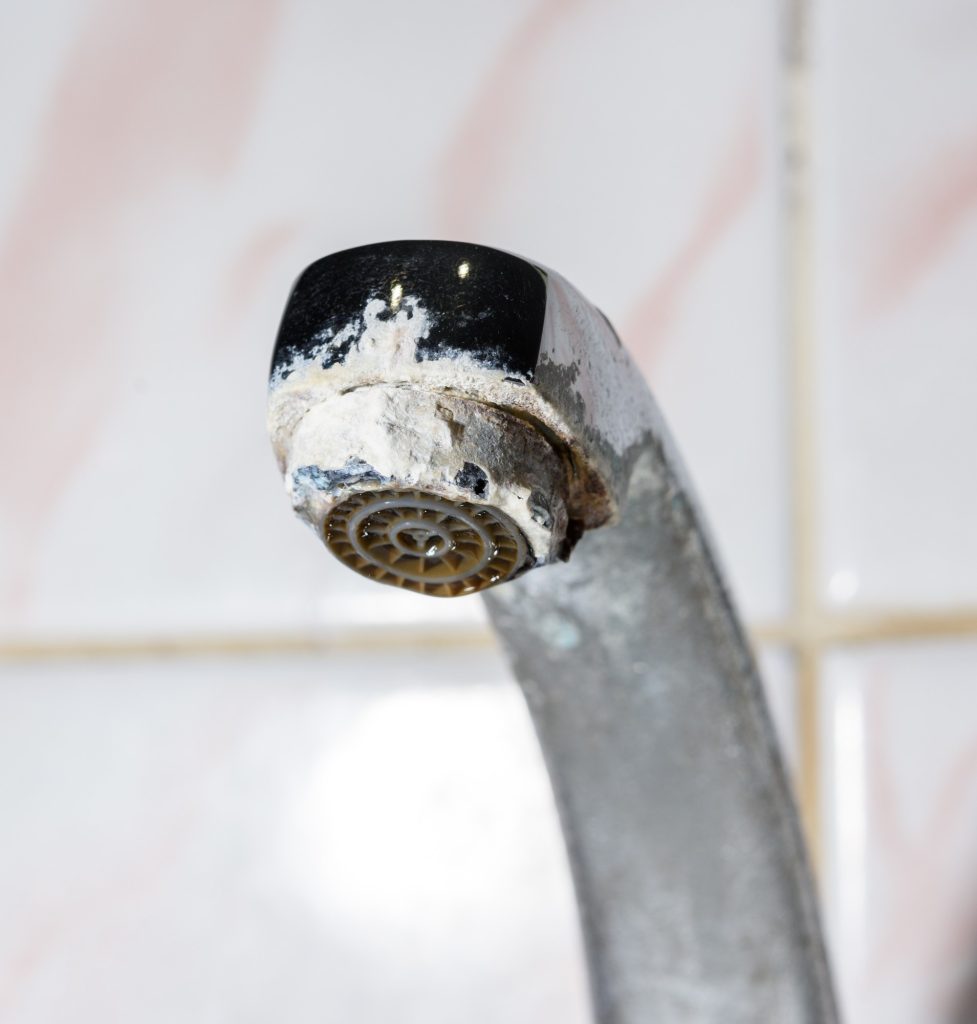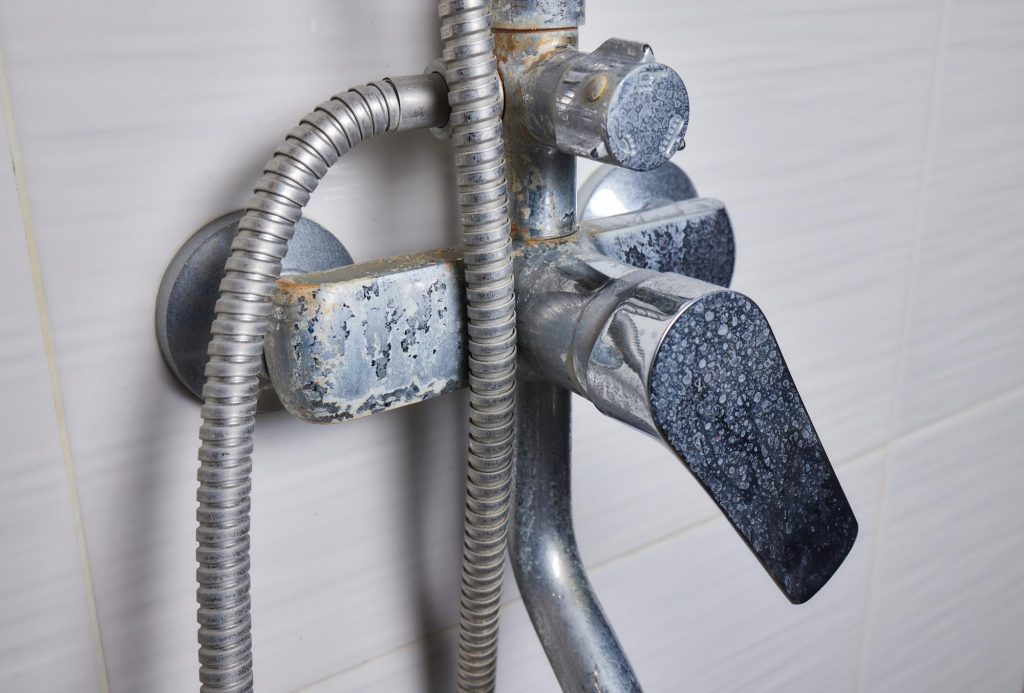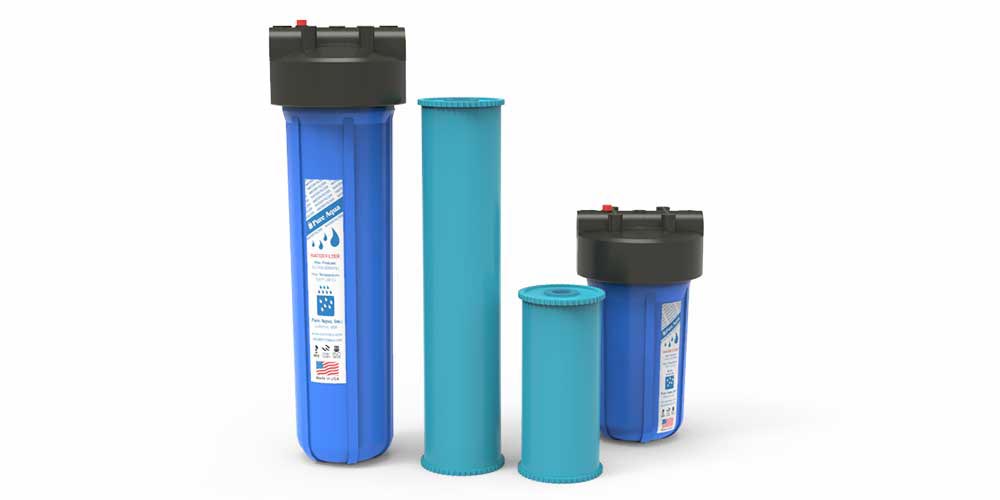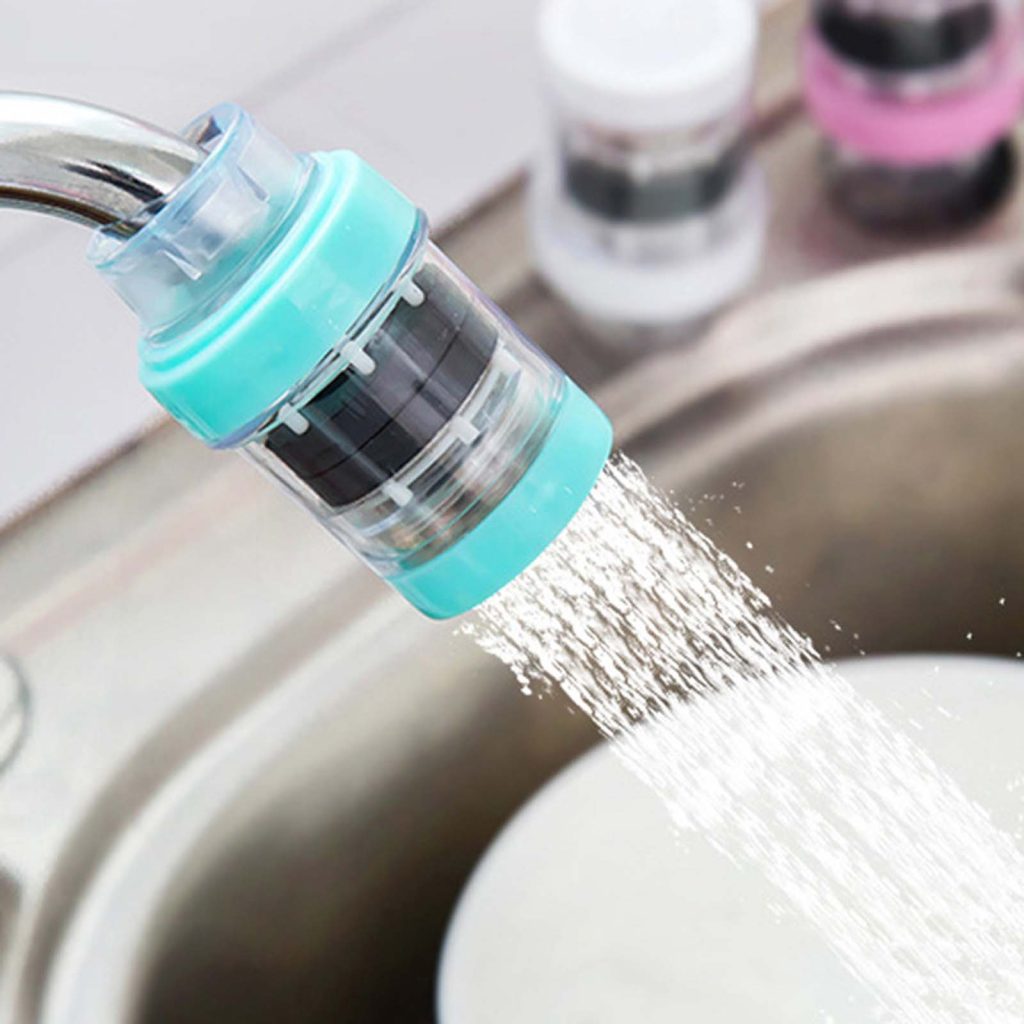You have probably noticed the white, crusty buildup on your showerhead or faucets. Or sometimes your clothes and dishes don’t seem to get as clean as they should! These are all signs of hard water. Hard water is water with high levels of minerals, such as calcium and magnesium. These minerals can leave behind a residue on surfaces and make it difficult for soaps and detergents to lather properly.
Not only is that annoying, but it can also have negative effects on household appliances. The mineral that gradually builds up can cause damage to your pipes, water heater, and other appliances, leading to costly repairs and replacements.

The good news is that filtering hard water is very easy. It may cost you some money at first but and can save you a lot of hassle and money in the long run. By installing a water filter, you can remove the minerals that cause hard water, resulting in cleaner dishes, softer clothes, and a longer lifespan for your appliances.
What is Hard Water?
Hard water is water that contains high levels of minerals, such as calcium and magnesium. These minerals can accumulate in your pipes, appliances, and fixtures, leaving behind deposits that can cause damage and reduce their efficiency over time. This can lead to a range of issues, including clogged pipes, reduced water flow, and higher energy bills.
Causes of Hard Water
Hard water is typically caused by the natural mineral content in the groundwater, which varies depending on the location and local geology. In some cases, hard water can be caused by human activities, such as excessive use of fertilizers or sewage contamination.
Identification of Hard Water
Several signs can indicate that you have hard water in your home. These include:
- Soap scum: If you notice a white film or residue on your bathroom fixtures or dishes, this can be a sign of hard water.
- Stiff laundry: Hard water can cause your clothes to become stiff and scratchy, even after washing.
- Reduced water flow: If your water flow seems slower than usual, this can be a sign of mineral buildup in your pipes.
- Stained fixtures: Hard water can cause rust-colored stains on your sinks, toilets, and other fixtures.
- Dry skin and hair: Hard water can strip your skin and hair of natural oils, leaving them feeling dry and irritated.

Now that you know what hard water is, you can take steps to protect your home and your family’s health. In the next section, we’ll explore the different types of water filters that can help you remove minerals from your water supply.
Types of Water Filters
When it comes to filtering hard water, there are several types of water filters to choose from. Each type has its own set of advantages and disadvantages, and it’s important to choose the right one based on your specific needs and preferences. Here are the most popular types of water filters for hard water.
Reverse Osmosis

Reverse osmosis is a popular water filtration method that uses a semipermeable membrane to remove impurities from water. It’s effective at removing minerals, chemicals, and other contaminants that cause hard water. Reverse osmosis systems are relatively expensive, but they are easy to maintain and provide high-quality water.
Ion Exchange

Ion exchange is another popular method for filtering hard water. It works by exchanging the minerals responsible for hard water with sodium ions. This process is effective at removing minerals like calcium and magnesium from water. Ion exchange systems are affordable and easy to install, but they require regular maintenance.
Carbon Filters

Carbon filters are a popular and affordable option for filtering hard water. They work by absorbing impurities and minerals from water, leaving it clean and fresh. Carbon filters are easy to install and maintain, but they are not as effective at removing minerals as other methods like reverse osmosis or ion exchange.
Magnetic Water Filters

Magnetic water filters are a relatively new technology that uses magnets to change the physical properties of water. This process is supposed to reduce the surface tension of water, making it easier for minerals to dissolve and preventing them from sticking to surfaces. Magnetic water filters are affordable and easy to install, but their effectiveness is still under debate.
Choosing the right type of water filter depends on your specific needs and preferences. Consider factors like water hardness level, budget, maintenance, and installation requirements before making your decision.
Steps to Filter Hard Water
Installing the Water Filter
The first step in filtering hard water is the installation of the water filter. It is essential to select the right filter for your needs, based on the water hardness level, budget, and other factors. Once you have selected the right filter, follow the manufacturer’s instructions for installation.
Typically, installation involves attaching the filter to the water supply line and ensuring that it is securely in place. It is essential to turn off the water supply before installation and test the filter’s flow rate after installation.
Pre-treatment of water
Pre-treatment of water is essential before filtering hard water to ensure that the filter performs optimally. Pre-treatment involves removing any sediment or debris from the water supply to prevent clogging of the filter. This can be done by installing a sediment filter before the water filter or by using a pre-filter system.
Regular Maintenance
Regular maintenance of the water filter is necessary to ensure that it continues to function correctly. This involves changing the filter cartridges at the recommended intervals to prevent clogging and buildup of contaminants.
It is also essential to clean the filter housing regularly to remove any accumulated dirt or debris. This can be done by following the manufacturer’s instructions for cleaning or by using a specialized cleaning solution.
In addition, it is important to test the water periodically to ensure that the filter is still effectively removing contaminants and to determine when a filter replacement is necessary.







